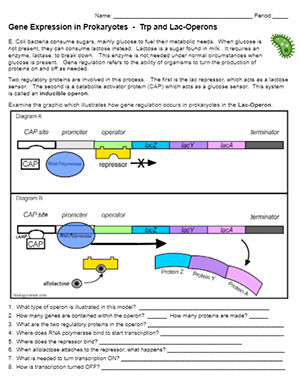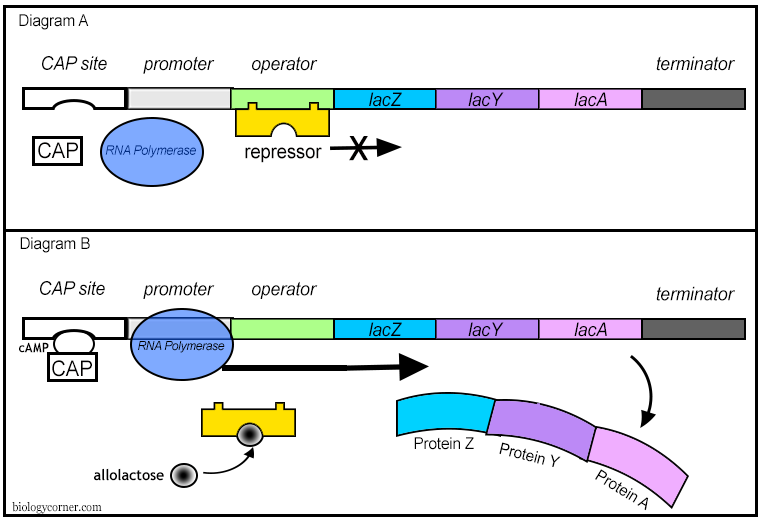
The lac-operon is a group of genes involved in lactose metabolism. E. coli bacteria consume glucose for metabolic processes. If glucose is absent, the bacteria can switch “ON” the genes needed to digest lactose, a milk sugar. These genes are normally in the “off” position, because there is no need for the bacteria to create those proteins when glucose is available.
The lac-operon is an inducible operon. That means, it is turned on when lactose is present in the environment. Bacteria do not need to transcribe these genes if there is no lactose present. Ideally, students should have prior knowledge about how enzymes work. I have another worksheet that illustrates the induced fit model of enzymes and substrates that students completed in earlier lessons.
Students examine a graphic that shows the three genes associated with the operon. The graphic illustrates what happens when lactose is present. Lactose binds to the repressor and removes it from the promoter region of the operon. This allows RNA polymerase to transcribe the mRNA that is used to create the three proteins needed to build the lactase enzyme.
On the second page of the document, students compare the lac operon to the trp operon. In this case, the operon is repressible. The presence of tryptophan as a food source means that bacteria do not need to transcribe the genes to make the amino acid.
I also refer students to Overview: Gene Regulation in bacteria published by the Khan Academy. This document provides a very thorough analysis on how by the lac and trp operon work.


